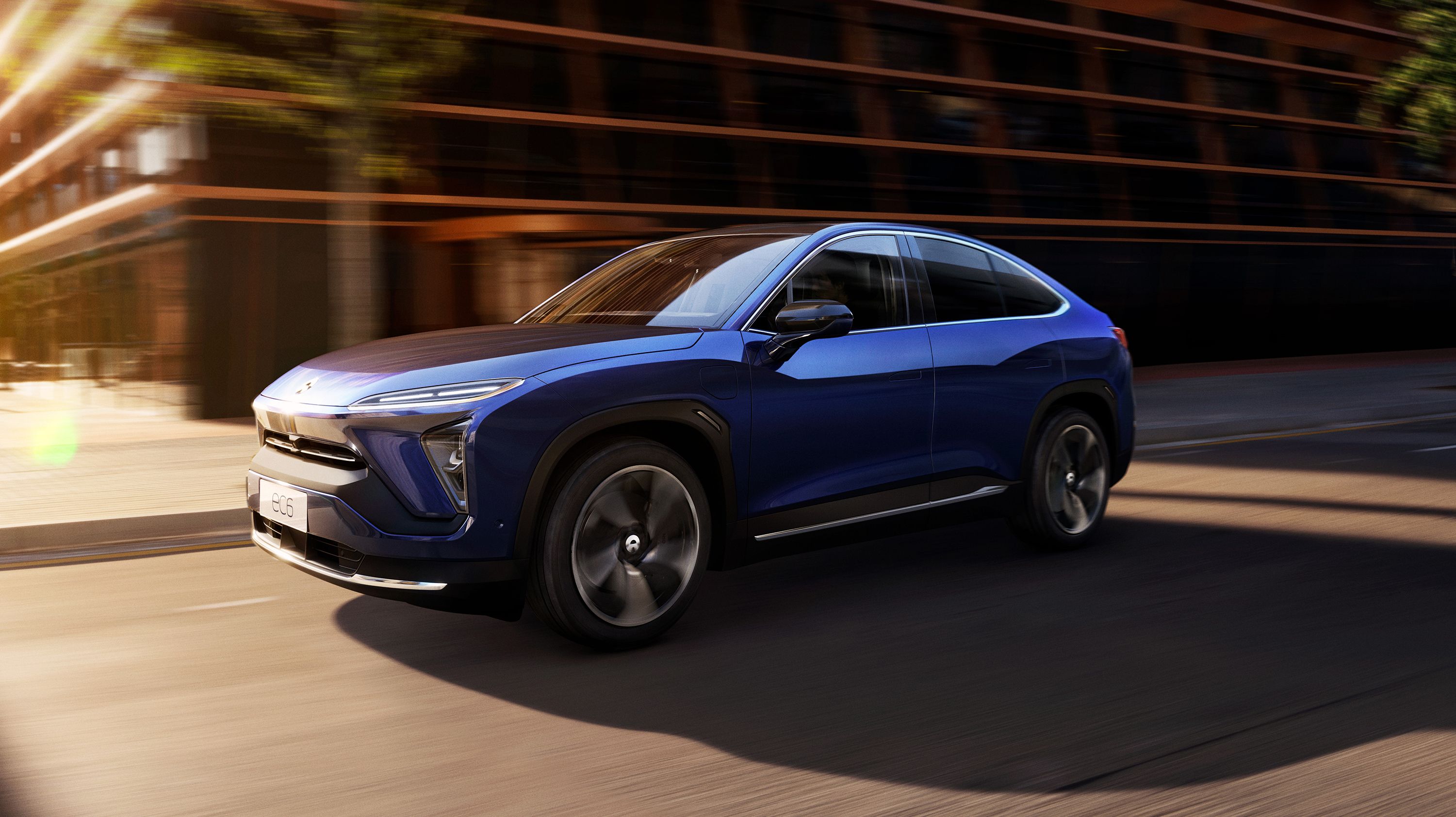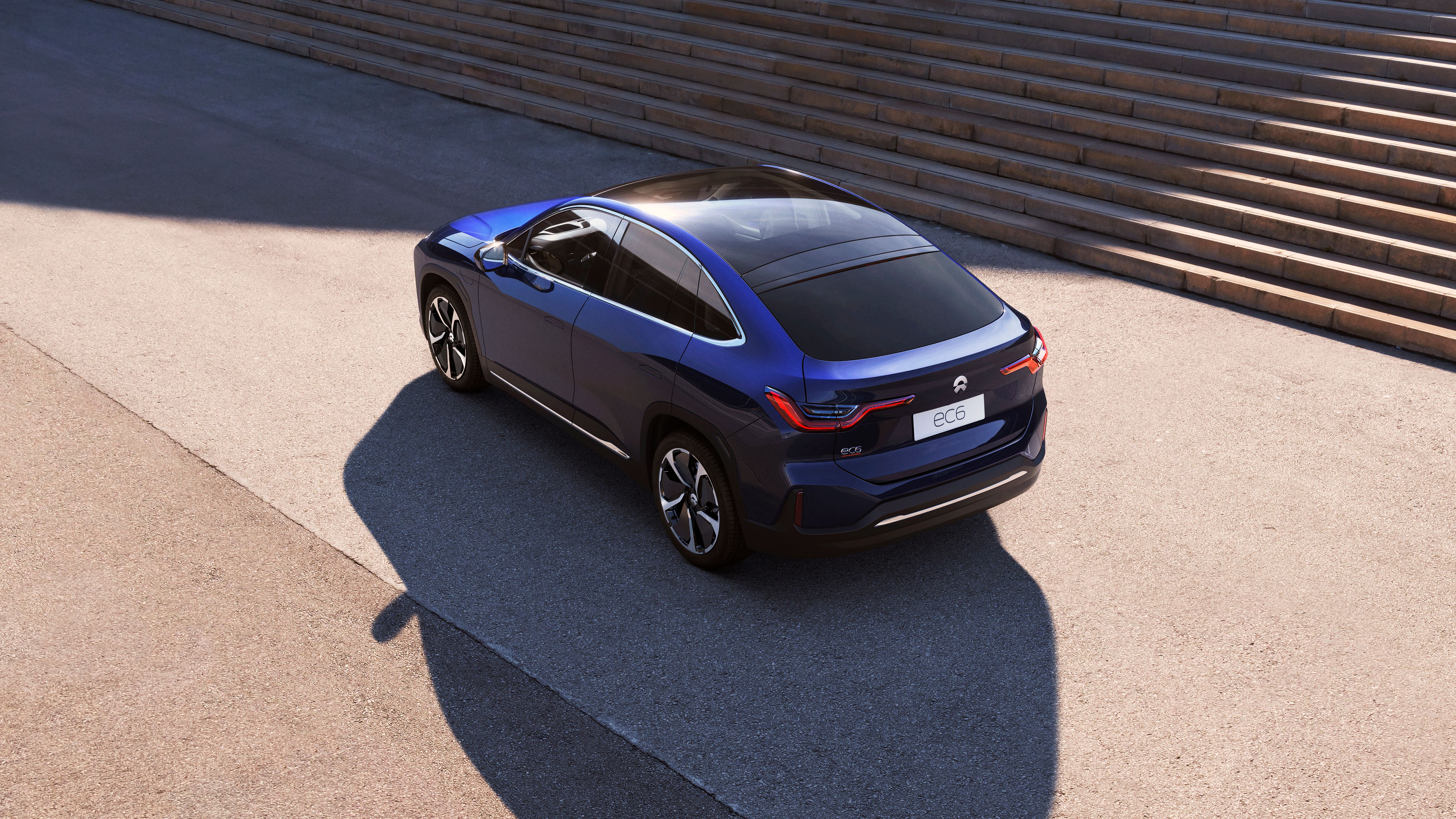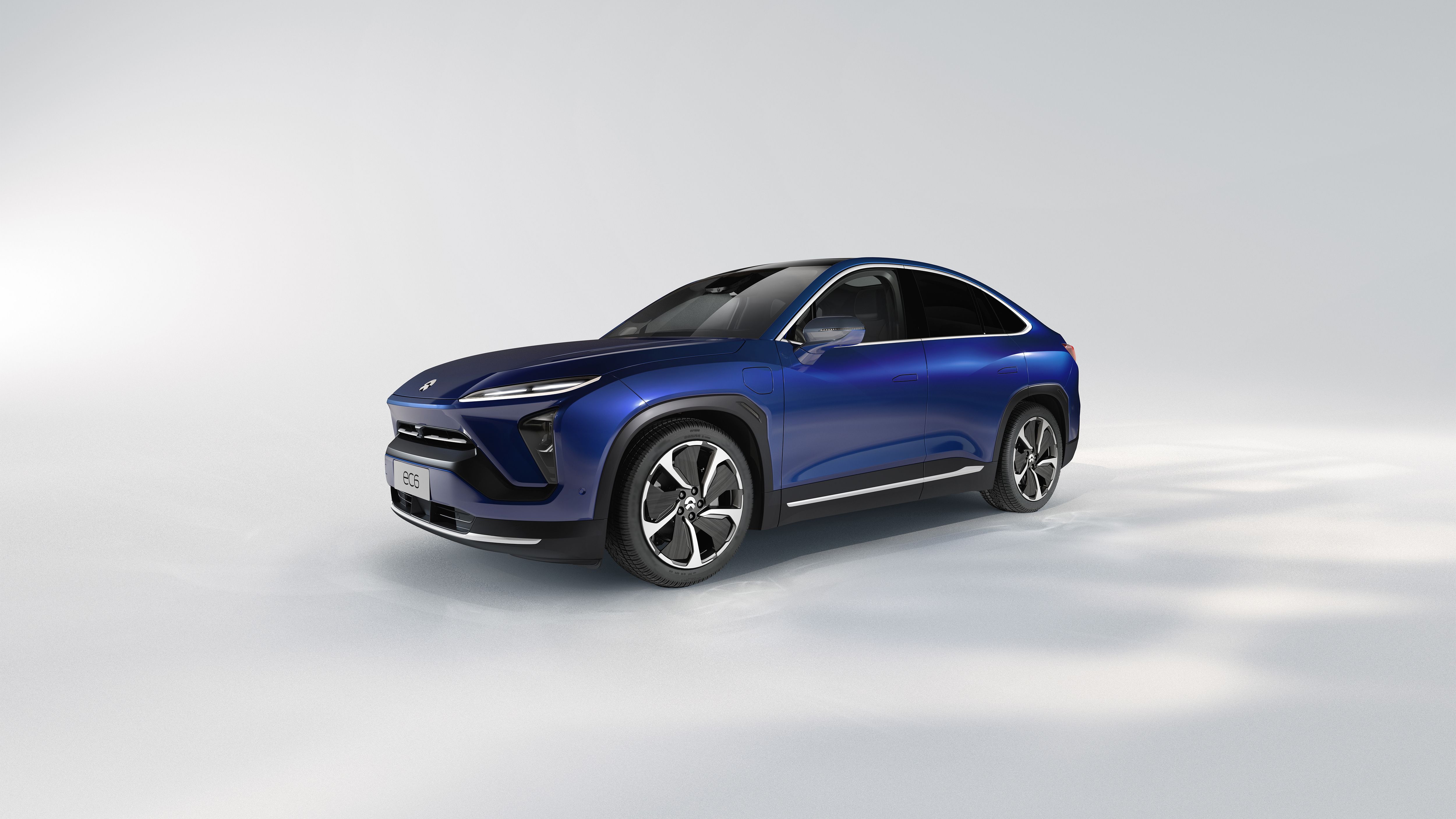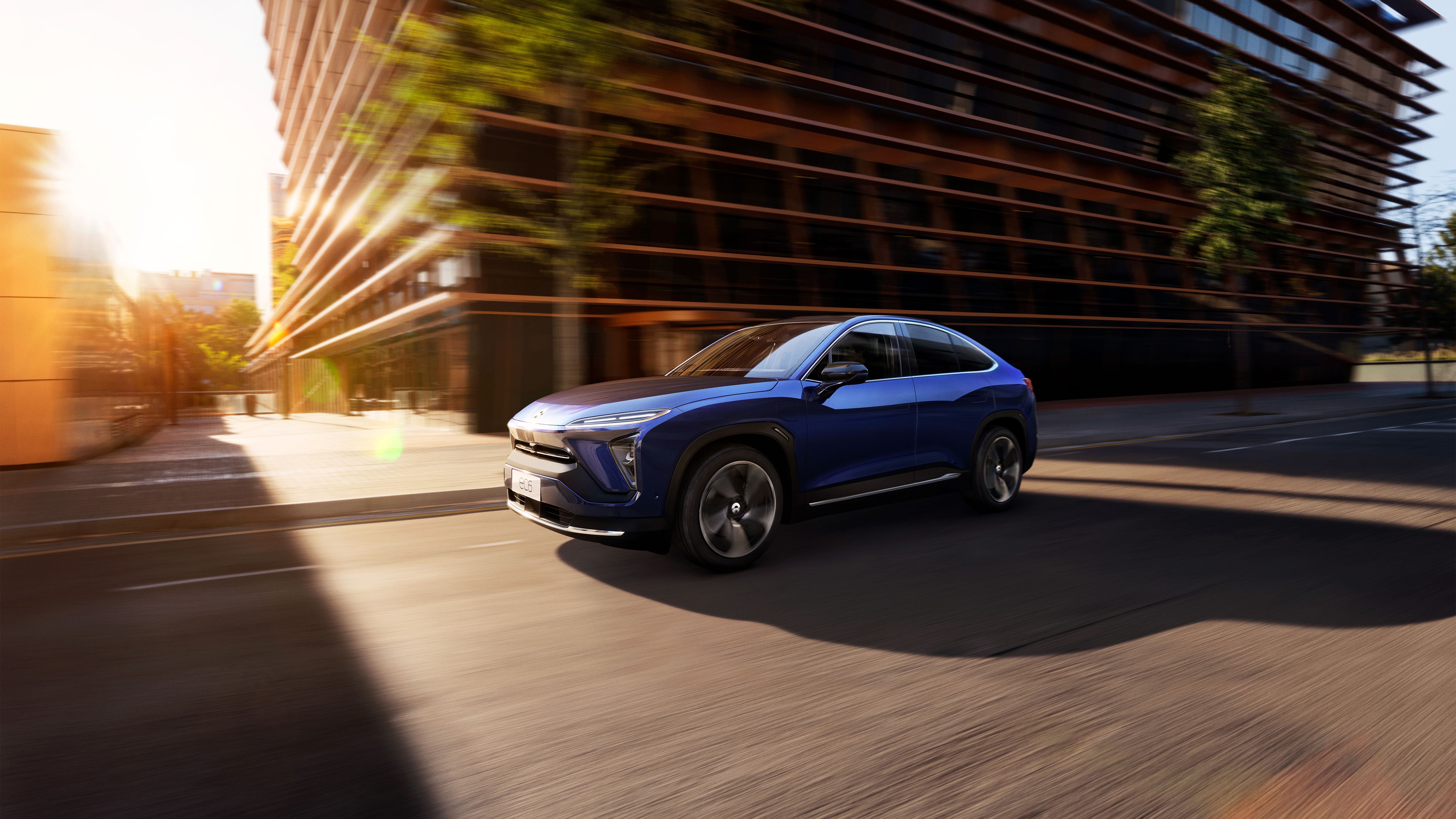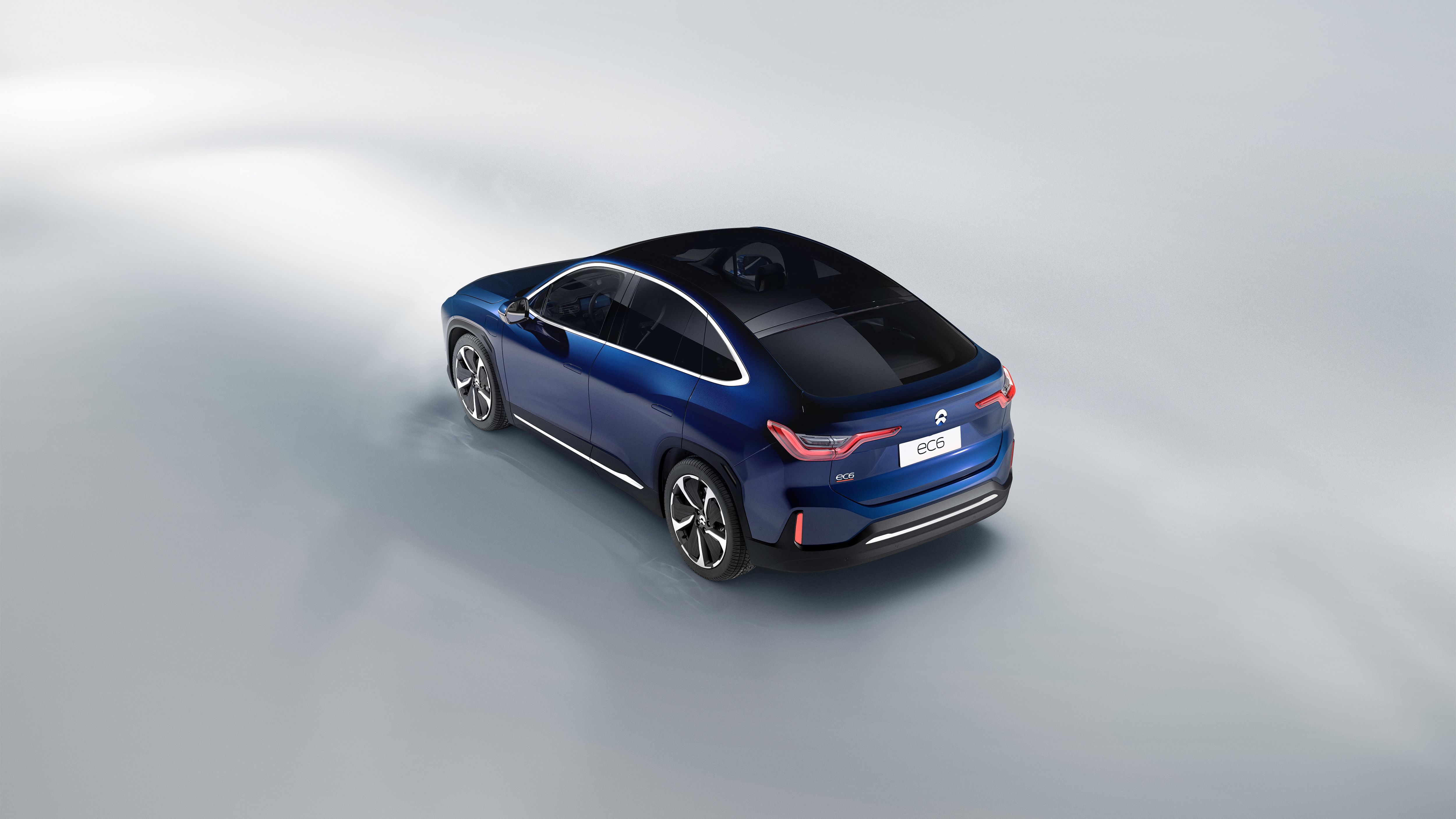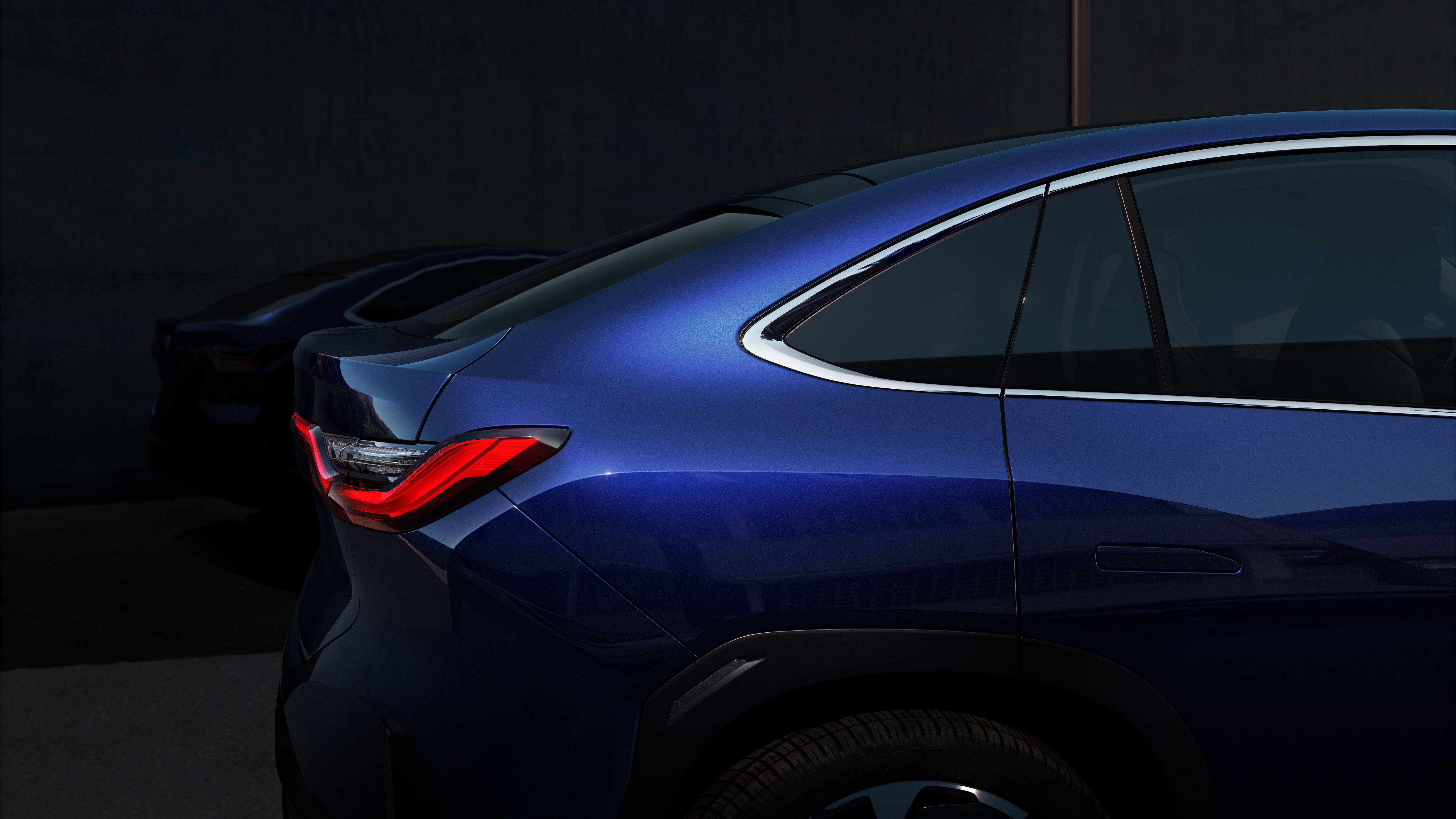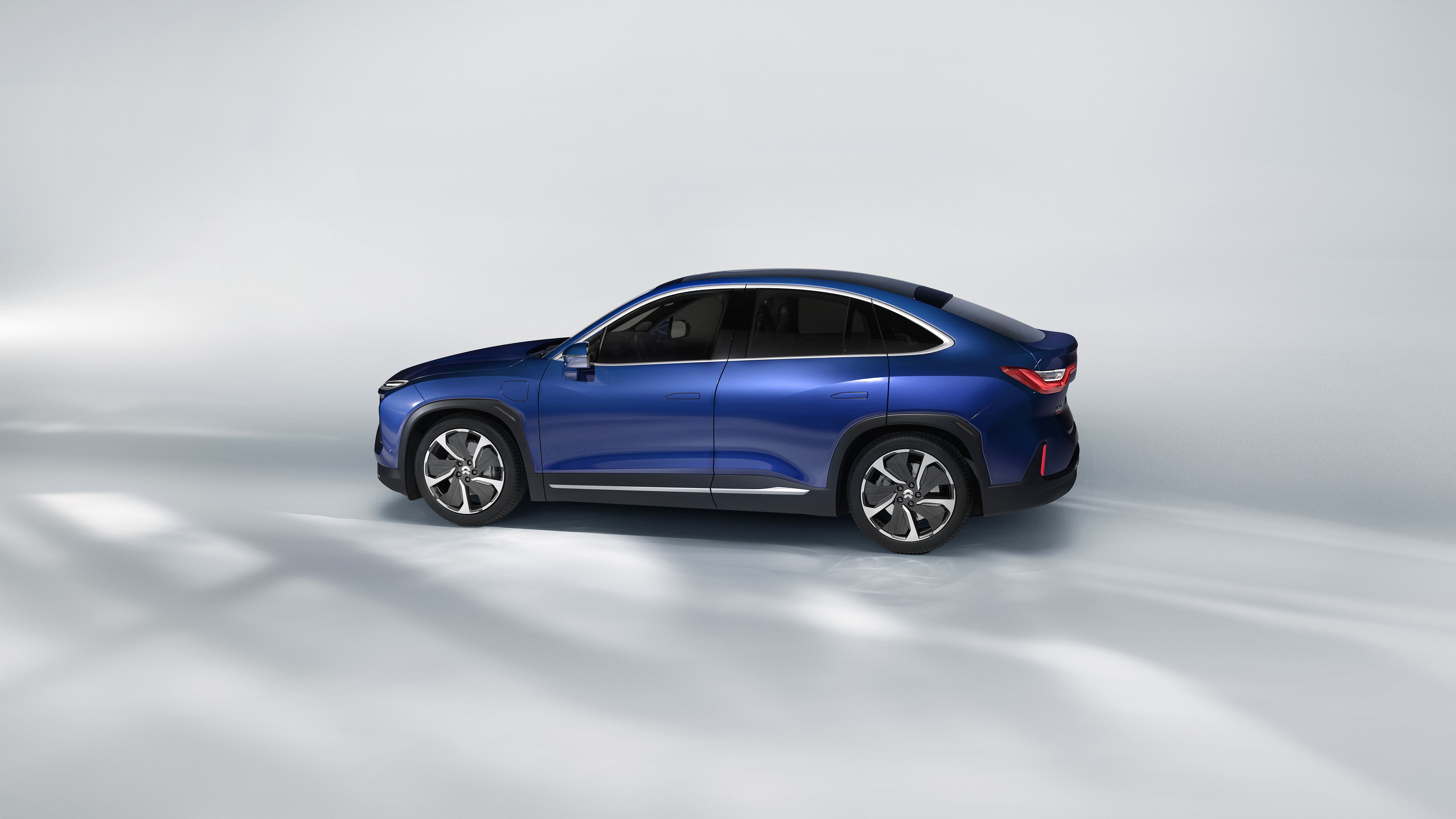Heavily based on the ES6, NIO’s new SUV-coupé is for the boxier ES6 what the BMW X6 is to the X5, the Mercedes-Benz GLE Coupe to the GLE, the Porsche Cayenne Coupe to the Cayenne, you get the gist. Or, in NIO’s own words, a ‘young, dynamic and progressive’ car.
Marketing and PR blabber aside, the EC6 is nothing more than the sloped-roof, less-headroom-in-the-rear-seat, hunchback-y version of the ES6. Unveiled during the ‘Believe in Better NIO Day 2019’ event in front of a large audience, the EC6 gets NIO’s latest offering in the battery pack department, namely a 100-kWh liquid-cooled thermostatic unit. Join us as we take an in-depth look at the NIO EC6 SUV-coupé.
2021 Nio EC6
- Make: Array
- Model: 2021 Nio EC6
- Horsepower: 536
- [do not use] Vehicle Model: Array
Exterior
From day one, NIO’s been busy baking in a very aggressive front end design to its cars. The ES6 made no exception, so it’s only natural for the EC6 to adopt he same styling.
Move to the side to notice the EC6’s sloping roofline that plunges quite sharply towards the rear end. As far as we can tell, nothing’s changed compared to the ES6 (except for the newly-found hunchback), so the car’s profile remains clean, dominated by the squarish front and rear wheel haunches.
Except length - 190.9 inches, NIO doesn’t provide any sort of size-related figures and neither does for the ES6. The best we can work with in this regard comes from EV Specifications, which mentions that the 2019 NIO ES6 is 77.4 inches wide and 69.2 inches high. Normally, the EC6 shouldn’t sport different figures, since adding in a sloped roof shouldn’t alter these dimensions, not even the 114.2-inch wheelbase or the 6.7-inch ground clearance. What’s more, the aerodynamic coefficient was reduced via the plunging roofline from the ES6’s 0.29 to 0.27.
Interior
We got no sort of pics showing the NIO EC6’s interior, but who are we kidding?
The dashboard will likely adopt the same horizontal design approach as well as a pair of digital displays: one that acts as instrument cluster and one that’s positioned on a portrait format, a la Tesla, Volvo, or Renault, which lets the user fiddle with the car’s climate control and multimedia settings. Because of the two screen that now integrate the better part of the EC6’s functions, physical buttons and controls are a rare sight: there’s a group of them right under the center screen and two smaller clusters on the steering wheel. And that’s pretty much it.
Expect the same one-piece sports seats to be found inside the EC6, together with the same flat-bottom steering wheel, and the Nomi car assistant (if you can’t spot it at a first glance, check out the very top of the dashboard for the black sphere with zero-shaped virtual eyes.
Practicality-wise, there are no interior size figures to help us get a better grasp on just how much space the ES6 has to offer. The same goes for the EC6, although trunk space (with the rear seats folded down) for the ES6 is rated at 50.6 cubic feet. Given the slope-y roof of the EC6, however, we expect a drop in space, maybe to around 45 cubic feet.
Drivetrain
Fortunately, NIO took the time to tell us what’s hiding under the EC6’s SUV-coupé body, so we know for sure that the Performance model is powered by a pair of electric motors.
2021 Nio EC6 specifications
|
Powertrain |
160-kW permanent-magnet motor with a 240-kW induction motor |
|---|---|
|
Output |
536 HP |
|
0 to 60 mph |
4.7 seconds |
|
Top Speed |
124 mph |
However, there’s one big difference between the two: the biggest battery available for the ES6 is an 84-kWh unit that allows a maximum range of 510 km (317 miles), according to NEDC (New European Driving Cycle) measurements, while the EC6 gets NIO’s all-new 100-kWh liquid-cooled battery pack that’s said to offer up to 615 kilometers (382 miles) of range. Mind you, though, that real-life figures might turn out lower, since the NEDC standard (not so new, by the way) is not that reliable. WLTP (Worldwide Harmonised Light Vehicle Test Procedure) readings would have been more relevant and closer to reality, but they were not available at the time of writing.
For various reasons, NIO fitted the ES6 with a lot of performance-oriented bits and bobs: four-piston Brembo brakes on all corners, an electric brake booster system dubbed iBooster, Pirelli P-Zero tires, and, of course, the aluminum & CFRP (Carbon Fiber Reinforced Plastic) body structure that’s said to offer the highest torsional stiffness of all current-production SUVs out there, rated at 44,930 Newton-meters (33,138 pound-feet) per arc degree. While it’s obvious that the EC6 will also inherit this state-of-the-art platform, together with the aforementioned gimmicks, the most important add-on remains the larger, more potent battery pack, that would put NIO in a better position to rival Tesla’s Model Y.
Prices
Prices for the 2020 NIO EC6 are to be announced in July 2020, with deliveries slated to kick off in September 2020. However, we can use the available ES6 pricing as a baseline for guesstimating how much will the EC6 cost once it hits the market.
The ES6 can be had in one of three trim levels: Premier Edition (¥498,000 or $71,427), Performance Version (¥398,000 or $57,084), and Sporty Version (¥358,000 or $51,347). Sporty is the entry-level model and it comes with a dual permanent-magnet e-motor setup, while Premier and Performance get the permanent-magnet motor paired to the induction motor.
We don’t expect these trims to change for the EC6, but given its more lifestyle-y vibe and the larger battery pack, price is bound to go up. So, expect the Premier Edition to fetch around $75,000-$80,000, with Performance and Sporty coming in at $60,000-$65,000, and $55,000-$58,000, respectively.
Competition
Tesla Model Y
Production of the Tesla Model Y is expected to kick off in early 2020. Tesla has split the range into three main models, namely the Performance ($61,000), Long Range - AWD and RWD ($52,000, $48,000), and Standard Range - RWD-only ($39,000). Standard Range models will be able to travel for about 230 miles on a single charge and reach 60 miles per hour from a standstill in 5.9 seconds en route to a top speed of 120 miles per hour. Long Range vehicles will get between 280 and 300 miles on a single charge, top speeds of 130 miles per hour (RWD) and 135 miles per hours (AWD, and sprint times of 5.5 seconds (RWD) and 4.8 seconds (AWD). Last but not least, the Model Y Performance can go 280 miles on a single full charge, but ups the ante when it comes to sprint times (0-60 miles per hour happens in 3.5 seconds) and top speed (150 miles per hour), according to InsideEVs. Unlike the NIO EC6, the Model Y promises room for up to seven adults (with the optional third row of seats) and 66 cubic-feet of cargo space.
Read our full review on the 2020 Tesla Model Y
Conclusion
There’s no hiding from the fact that the NIO ES6 and EC6 are 90 percent the same vehicle. But as SUV customers are ditching the traditional boxy shape for the SUV-coupé body, this migration every major carmaker is undertaking should surprise us. The EC6 won’t be as practical as the ES6, that’s for sure. To make up for that, it will pack a new 100-kWh battery pack, hence more range, but at the same time, we don’t see why NIO would opt out of offering the new liquid-cooled battery pack for the ES6 in the future. According to SCMP, NIO is currently fighting to survive after losing around $4 million a day during 2019’s second quarter, so the EC6 could be a desperate attempt - or one of many - to breathe some life into the company’s finances.

